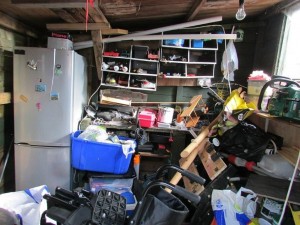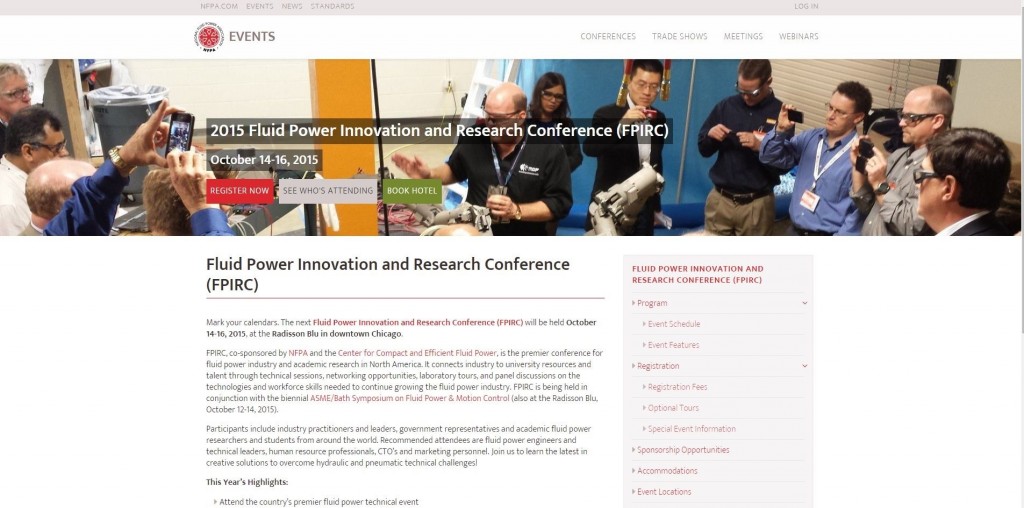
 The NFPA is cleaning out the garage they call NFPA.com. It’s a big process, but they think you will appreciate the result when they’re done. NFPA.com has long been the site for information they make available to members, prospective members, people who want to know about fluid power, purchasers of standards and others.
The NFPA is cleaning out the garage they call NFPA.com. It’s a big process, but they think you will appreciate the result when they’re done. NFPA.com has long been the site for information they make available to members, prospective members, people who want to know about fluid power, purchasers of standards and others.
 The NFPA recently said, “Just like most of our garages, we use it for everything, and it gets junked up over time. But unlike a garage, the door to our website is open, the lights are on 24/7, and our clutter is visible. It would be wrong to set a fire and wait for the insurance check. So with brooms and dustpans in hand, here’s what we’re going to do…” The following list outlines NFPA strategies for streamlining their site:
The NFPA recently said, “Just like most of our garages, we use it for everything, and it gets junked up over time. But unlike a garage, the door to our website is open, the lights are on 24/7, and our clutter is visible. It would be wrong to set a fire and wait for the insurance check. So with brooms and dustpans in hand, here’s what we’re going to do…” The following list outlines NFPA strategies for streamlining their site:
• Take content out of the one-site clutter and organize across multiple sites, each focused on a specific content or audience area to help drive greater visibility.
• Establish clear and logical navigation linkages among the sites.
• Create a consistent look and feel so users know they’re on an NFPA site without needing to see the logo.
• Where appropriate, create online networking communities to extend the value of networking from in-person meetings to the web.
• Ensure all sites are mobile-friendly, and of course…
• Get rid of old junk!
The NFPA has learned from some early experiments. One of its first clean-up efforts can be seen at NFPA News (news.nfpahub.com). The NFPA said it doesn’t entirely have the look and feel they are planning for the long haul, but they’re leaving it as is for now. They have used NFPA News to start breaking down the silo walls, with multiple staff using WordPress to contribute content that gets published to the news site.
In April and May they launched two new sites:
Events: nfpahub.com/events—This site serves as the main entry point for registration and information on all conferences, regional meetings, trade show activities and webinars.
Standards Development: nfpahub.com/standards—This site serves as the online workspace for standards development committees. Committee members can share and mark up documents, add comments, and vote and track ballots, building efficiency into the development process for everyone.
What’s Next
Stats/Reports: Stats/Reports: nfpahub.com/stats will be the main point of entry for all NFPA statistical services program information, including Confidential Shipment Statistics Report, forecast reports and the Electronic Statistical Toolkit. The site is expected to launch in September.
Fluid Power Design Blog: This site is planned for the end of 2015 and will be focused on promoting fluid power technology to external audiences (URL to be determined later). Content will come from members and will be focused on promoting the advantages of hydraulics and pneumatics through case examples and general guidance on how to design and maintain systems. Staff has begun working with the NFPA Pneumatics Council on some of these ideas.
Workforce/Careers: This summer, the process of planning for an overall web presence will begin. This new web presence will be aimed at promoting workforce development efforts, as well as connecting students, educators and industry as a community. The NFPA intends to complete planning and start building by the end of the year for a spring 2016 launch.
NFPA.com and NFPAFoundation.org: NFPA.com will be more focused on information about NFPA, the industry and membership. The Foundation site will go away, as content transfers to Workforce/Careers and NFPA.com. When the dust settles, the NFPA wants the look and feel to be consistent with the other web properties.
What’s the toughest issue in all of this? Getting NFPA.com with its many database-driven features and text-heavy pages trimmed down and moved effectively into WordPress. Hide the gas can and matches, and by this time next year, they said they should have it all done. Stay tuned.
NFPA
nfpa.com
Filed Under: News